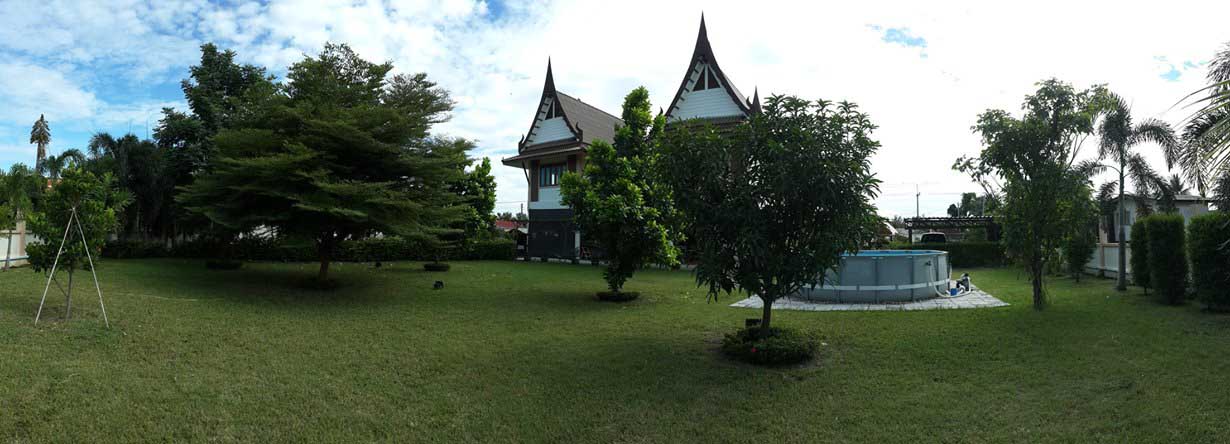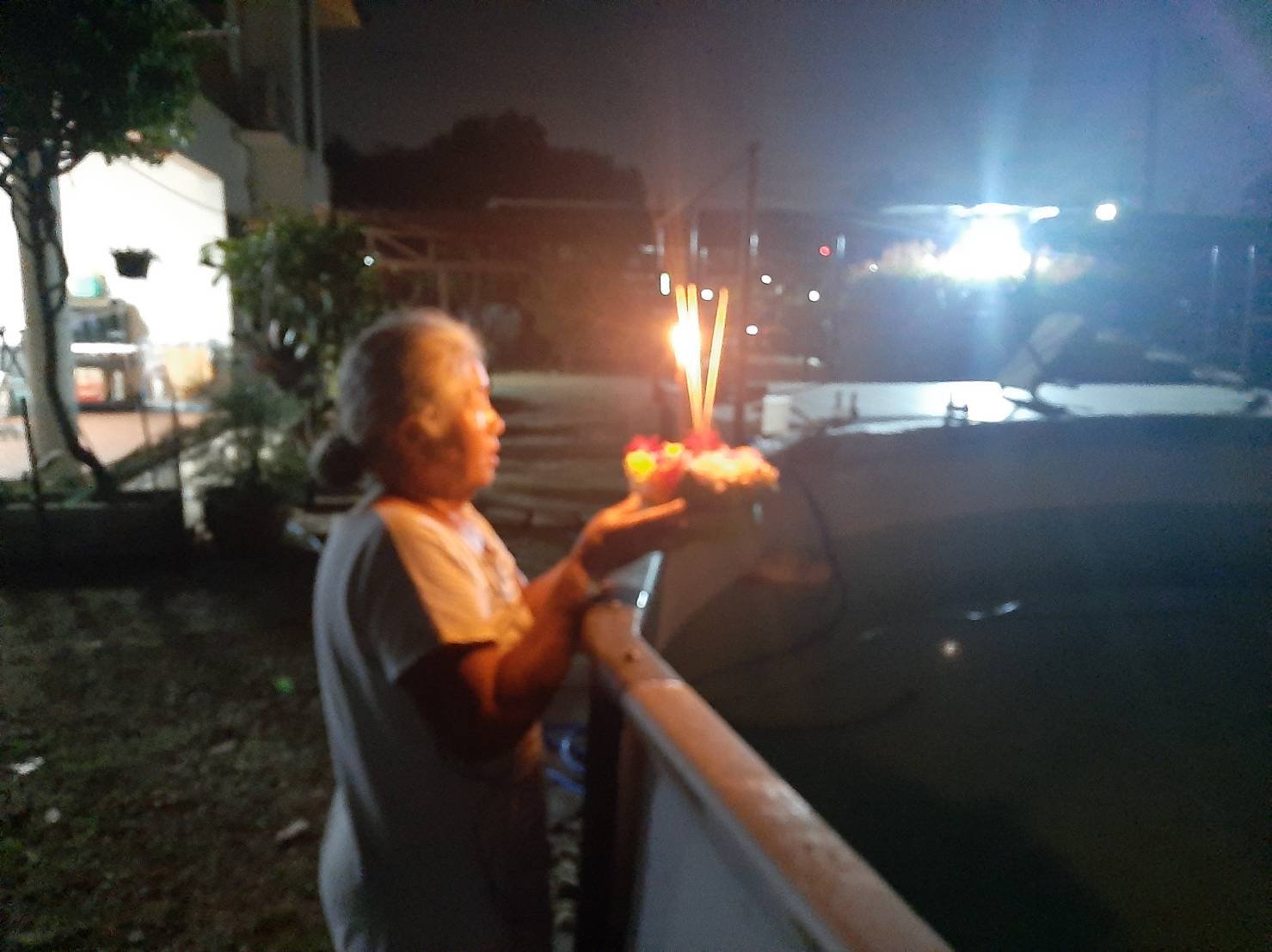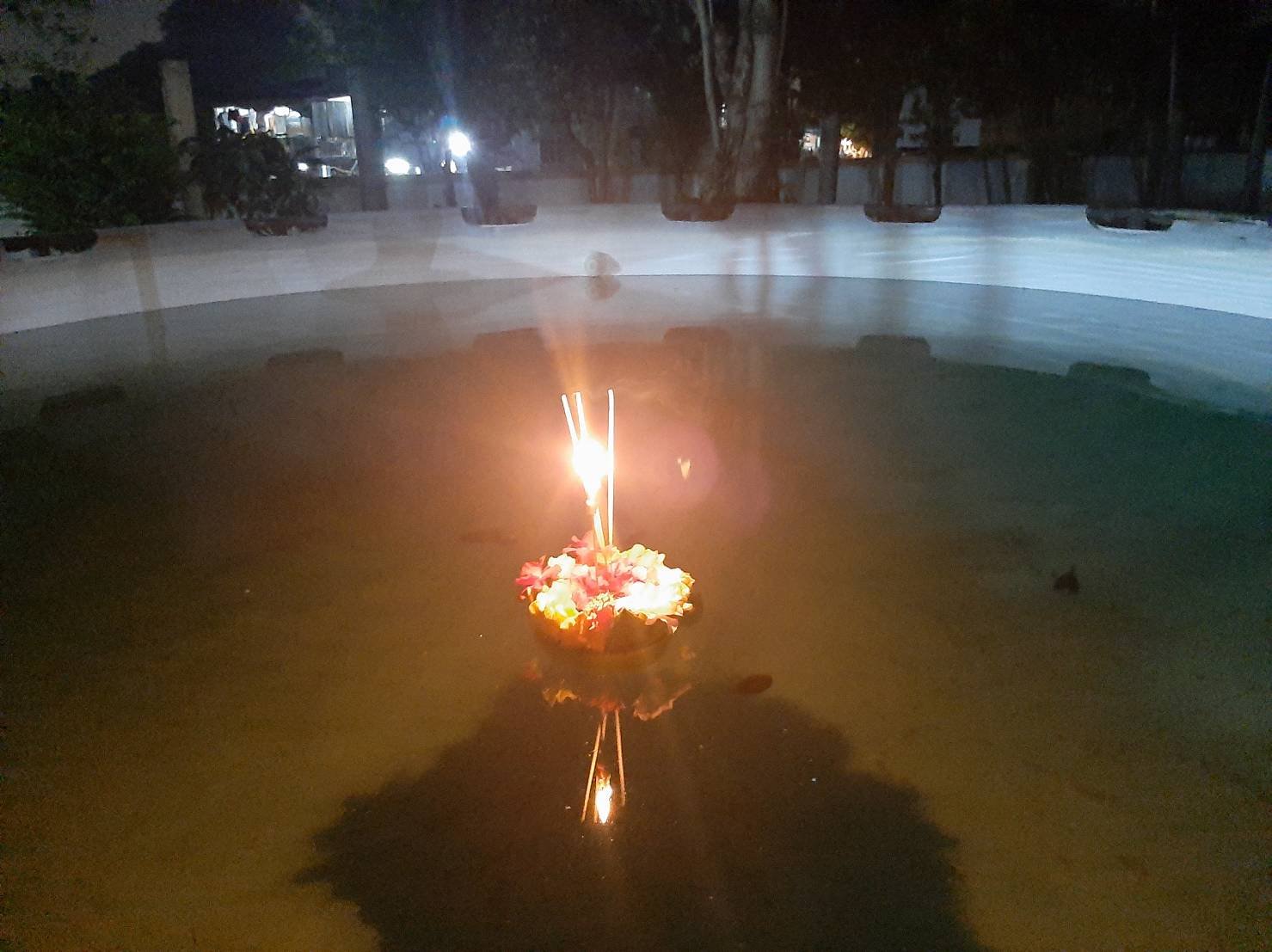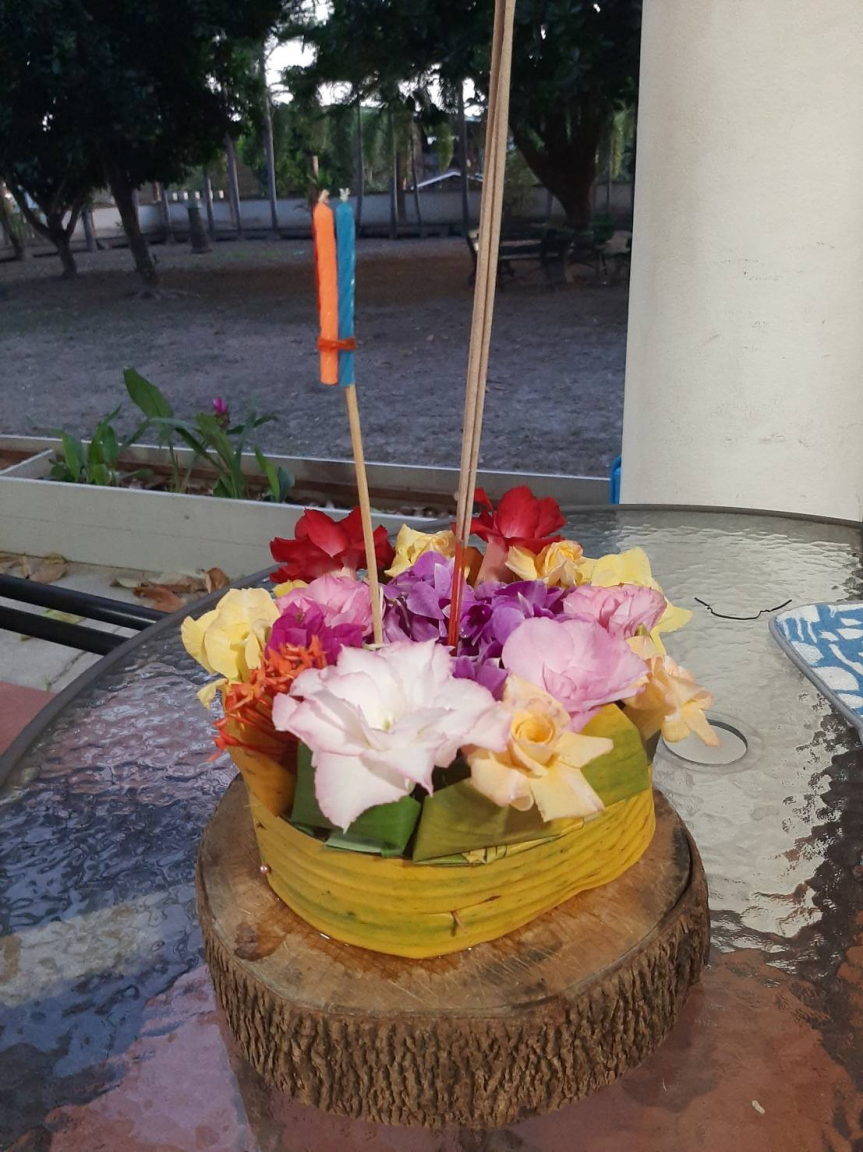-
Posts
46,463 -
Joined
-
Last visited
-
Days Won
2
Content Type
Events
Forums
Downloads
Quizzes
Gallery
Blogs
Everything posted by Crossy
-
Don't worry, Madam is on the case. I expect to be visiting the farm shop later/tomorrow to load up with (and pay for ???? ) bags of mysterious unguents (formulation and purpose unknown). She does the gardening; I go out and earn the $$$ to pay for the gardening ????
-
One last post before this thread drifts off into the sunset. There is/was a large pile of sand left over from bag filling located directly across the road from our gate. The village head came on the speakers saying if anyone wanted some to help themselves, free! Madam is a sucker for "free" so she and a couple of friends spent the morning with wheelbarrows making a significant dent in said pile. Much soil improvement in the works (apparently, it's the "wrong type" of sand for concrete).
-

Can anyone recco a good printer that is available in Thailand ?
Crossy replied to Pumpuynarak's topic in IT and Computers
Ours is a Canon imageCLASS MF635Cx Color Multi-Function Printer with Duplex/LAN/WiFi (now discontinued). Cost 15,500 in 2018 when we bought it (from Invade). Does two-sided scanning and printing. Like other lasers it just prints, first time every time. EDIT The updated version https://www.invadeit.co.th/product/multi-function-printers/canon/imageclass-mf643cdw-multi-function-colour-printer-print-scan-copy-duplex-lan-wifi-p046838/ is 13,910 at Invade -

Can anyone recco a good printer that is available in Thailand ?
Crossy replied to Pumpuynarak's topic in IT and Computers
Another +10^6 for laser. Even colour is becoming affordable, we have both. -

How to sign up Thai expat daughter for B30 health plan?
Crossy replied to unblocktheplanet's topic in Health and Medicine
You might be able to do it (and select your local hospital) on the SSO website https://www.sso.go.th/wpr/main Note, you will need a Thai speaker, the English option on the site is worse than useless. -

Uk marriage certificate
Crossy replied to canada john's topic in Thai Visas, Residency, and Work Permits
Read this tale of woe, hopefully you won't hit the same obstacles. Links to the earlier parts which should be of interest are in the first post. -

Quoted 3 million THB from PEA to get 400 Amp Service onsite!
Crossy replied to ElephantEgo's topic in The Electrical Forum
Yup. Our OP is really feeding us so little information that it's impossible to even determine if he's waaay over estimating his load. -

Is Thailand a better place to live then in western countries
Crossy replied to kingstonkid's topic in ASEAN NOW Community Pub
Yeah, I left the UK for work (in Korea) in 1995, permanently in 2000 after my blue-eyed, blonde-haired, large breasted, Essex Girl (TOWIE is totally real) swapped me for a newer model (OK, I was bonking a Korean lady but ...). Came to Thailand with a shiny new Thai wife in 2004. Never been back, all the family want to come here ???? I also earn rather more than I could in the UK and have a home I could never even imagine back home. -
If the bus routes avoid going through BKK itself I doubt anyone would be remotely interested.
-
130sq ft = about 14 m2. Standard Thai guesstimate is 600-700 BTU per m2, so 9,000-10,000 sounds about right unless you need arctic conditions for your pet penguins or the room has a heavy heat gain from sun on the walls, windows and roof. A 12,000 BTU inverter type wouldn't be outside the "fairly sensible" range. Try another shop ????
-

Quoted 3 million THB from PEA to get 400 Amp Service onsite!
Crossy replied to ElephantEgo's topic in The Electrical Forum
Yeah, it now seems that it's 400A total (maybe)! Our OP is really being a bit light on his detail, it would be really handy to know what the nature of the load is, maybe we can apply diversity and get the requirement down and save him some $$$. Is it a big cannabis grow, BTC mining, a resort? -

Quoted 3 million THB from PEA to get 400 Amp Service onsite!
Crossy replied to ElephantEgo's topic in The Electrical Forum
So 400A spread over 3-phases then, that's more like 90kW. Could you squeeze into a 100A 3-phase supply? That may be available without a transformer (depends upon local conditions) ???? You really need to get an experienced contractor in to design your system, he will likely charge. BUT He may also offer a refund of (part of) the charge if you use his services to do the job. PEA will be able to supply a list of contractors approved to do HV work. You really aren't telling us enough detail here, the nature of the load is actually very important. Just where did your "400A" requirement actually come from, someone must have determined that via some sort of prospective load calculation? -

Sick pay, severance and the like.
Crossy replied to Crossy's topic in Jobs, Economy, Banking, Business, Investments
Yeah ^^^, tax and social are all 100% legit ???? -

Sick pay, severance and the like.
Crossy replied to Crossy's topic in Jobs, Economy, Banking, Business, Investments
I found this on sick leave https://thailawyers.com/sick-leave-per-thailand-labour-law/ it's dated 2012 so no idea if anything has changed since then. -

Tax reductions of 80% on electric vehicles to reduce pollution
Crossy replied to webfact's topic in Thailand News
You need to move away from lead-acid packs. If you are using up lithium packs in 3 years you need to look at your charging/loading. -

Sick pay, severance and the like.
Crossy replied to Crossy's topic in Jobs, Economy, Banking, Business, Investments
Paid holiday would be determined by your employment contract, mine's not up to UK levels, but still not to be sniffed at ???? EDIT Apparently there's a legal minimum of 6 days per year. I understand that permanent employees are allowed up to 30 paid "sick" days in a year, but any absence of 3 days or more requires a doctor's certificate, and, apparently, not providing a certificate is grounds for dismissal WITHOUT severance (which is evidently what's causing the worries). -
OK, here we go, this is NOT me, honest (if you remember the saga of the yellow book, it's the same chap) ???? Anyway, I have farang friend who is a permanent employee of a Thai company, he's been there >15 years and is on a decent (ok, very good) salary. He has to go into hospital for some potentially serious surgery (he has insurance that will cover the cost, so not an issue there). He is worried that his employer won't pay his salary whilst he is laid up (it could end up being more than a month, maybe two) and of course he has a wife and mortgage to feed. He is also worried that his employer may use his extended absence as an excuse to "dispense with his services" and try to get away with not paying the legally required severance (which would be 300 days of his contracted salary). He's well known as a "worrier" but in this case is he justified? Any thoughts?
-
Floated in the swimming pool so the bio-degradable bit doesn't really matter, it's the thought that counts. I love the lady to bits!
-
-
What sort of "features" are you looking for? We're not in CR but there are certainly places specialising in recovered doors, windows, shutters, C47 aircraft**, etc. all over the country. ** A neighbour to the family residence in PhaChi actually has a C47 (DC3 / Dakota) in the garden. Apparently owned by a farang who bought it for his restaurant and is paying storage rent. It's been there since 2004 when we got to Thailand.
-

Customs + VAT on laptop computer purchased on Amazon (USA)
Crossy replied to WaveHunter's topic in General Topics
Every country in the known universe charges duty and VAT on the CIF (Cost, Insurance, Freight) value. Computers are indeed zero-rated for duty so only the VAT plus any "handling fee" charged by the freight/clearance company. I think Amazon have a system whereby you can pre-pay for the customs stuff and then get a refund of any overpayment. Any particular reason you don't want to buy here and avoid any potential warranty issues?? -
Fixed ????
-

Switch between grid and off grid system in same house
Crossy replied to Elik's topic in Alternative/Renewable Energy Forum
I just did a quick and dirty calculation for our system of 10.6kWP of panels, 11kW of inverter, 5kWh ESS (actually bigger but I'm limiting usage to maintain UPS functionality). Over a week that had 4 average days, 1 really good day, 2 crumby days. Average export / re-import was 12.2kWh. So, over a month that would be about 366kWh or 1,650 Baht which would be lost if we got a no-export meter and did nothing. Adding 12-15kWh of (DIY) storage would be around 75k Baht so ROI on the ESS would work out at just under 4 years. If you went for commercial ESS units that would at least double and potentially enter the "not really worth it" area. Also, note that on the "really good day" we exported/re-imported 21kWh a fair chunk of which would have been thrown away because a 15kWh ESS was full.










